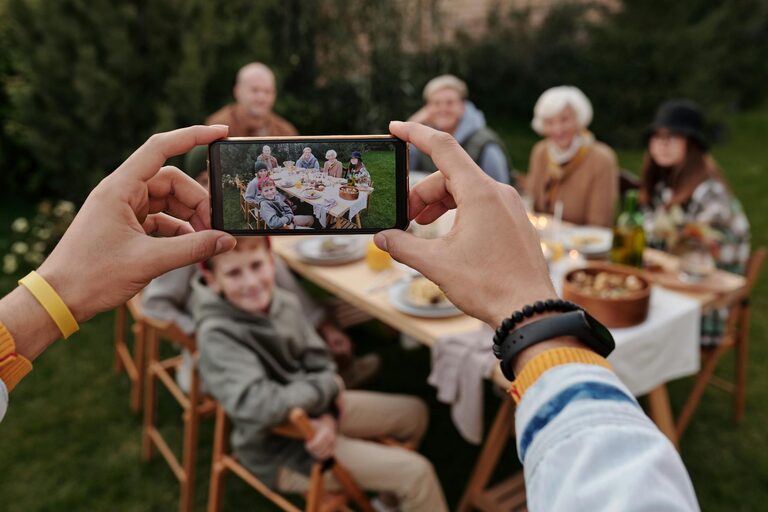Photography has never been more accessible than it is today. With powerful smartphones in most pockets, anyone can capture moments anytime, anywhere. However, taking truly great photos with your phone requires a bit of know-how. Whether you’re new to photography or just want to get more from your device, these beginner tips will help you snap better pictures and bring your images to life.
Understand Your Phone Camera’s Basics
Before you dive into fancy techniques, it’s helpful to get familiar with your phone’s camera features.
– Explore the Camera App: Spend some time opening your camera app and discovering its settings. Most phones have different shooting modes like portrait, panorama, and night mode. Understanding these can help you choose the right mode for each situation.
– Clean Your Lens: It sounds simple, but many blurry or foggy photos are caused by a dirty lens. Use a soft, lint-free cloth to gently clean your lens and avoid fingerprints or dust.
– Learn to Focus: Tap your screen to focus on your subject. This helps your phone adjust the exposure and sharpness to that area, resulting in clearer images.
Composition Techniques to Enhance Your Photos
Great photography is not just about what you capture, but how you frame it. Here are some easy-to-follow composition tips:
Use the Rule of Thirds
Imagine your screen divided into a 3×3 grid. Position important elements along these lines or at their intersections to create balanced and engaging photos. Many phones allow you to turn on a grid overlay in the camera settings.
Look for Leading Lines
Leading lines are natural or man-made lines in your scene that draw the viewer’s eyes toward the main subject. Roads, fences, or pathways can guide attention and add depth to your photos.
Frame Your Subject
Use elements like windows, archways, or branches to frame your subject. This technique adds interest and focuses the viewer’s eye on the subject.
Avoid Clutter
A busy background can distract from your main subject. Move around or adjust your angle to keep backgrounds clean and simple.
Lighting: The Key to Great Photos
Lighting is perhaps the most important factor in photography. Here’s how to make the most of it:
– Natural Light is Best: Whenever possible, use natural light. Early morning or late afternoon (known as golden hour) provides soft, warm light that enhances colors and textures.
– Avoid Harsh Midday Sun: Direct overhead sunlight can create strong shadows and blown-out highlights. If shooting in bright sun, find some shade for more even lighting.
– Use Shadows Creatively: Shadows can add drama and depth if used intentionally. Experiment with different angles to see how shadows affect your composition.
– Don’t Use Your Zoom: Most phone cameras use digital zoom, which can reduce image quality. Instead, move closer to your subject for better detail.
Tips for Steadier Shots
Blur from shaky hands is a common problem with phone photos, but there are easy fixes:
– Hold Your Phone with Both Hands: This provides better stability and control.
– Lean on a Stable Surface: Rest your elbows on a table or lean against a wall for extra support.
– Use a Timer or Voice Control: Setting a short timer delay or using voice commands can reduce movement caused by tapping the shutter button.
– Consider a Tripod: Affordable phone tripods help keep your device steady, especially in low light or when taking long exposures.
Experiment with Editing Apps
Editing can bring out the best in your photos without needing complex software.
– Crop and Straighten: Adjusting the framing and horizon line can improve composition after the shot.
– Adjust Brightness and Contrast: Modifying exposure can make your photo pop or reveal hidden details.
– Use Filters Sparingly: Filters add style but should enhance, not overpower, the photo.
Popular free apps like Snapseed, VSCO, or Lightroom Mobile offer user-friendly tools to polish your pictures.
Practice Everyday
Like any skill, photography improves with regular practice. Challenge yourself to take photos daily or focus on different subjects each week:
– Landscapes
– Portraits of friends or pets
– Close-up shots of textures or patterns
– Street photography
By experimenting with various styles and techniques, you’ll develop an eye for what works and grow your confidence.
Key Takeaways
– Learn your camera’s features and keep the lens clean.
– Use composition rules like the rule of thirds and leading lines.
– Prioritize good lighting, especially natural light.
– Keep your phone steady for sharper photos.
– Edit photos mindfully to enhance but not overdo.
– Practice consistently to improve your skills.
With patience and a bit of creativity, your phone photos can go from ordinary to impressive. Grab your phone, try these tips, and start capturing the world around you in better, brighter ways today!

